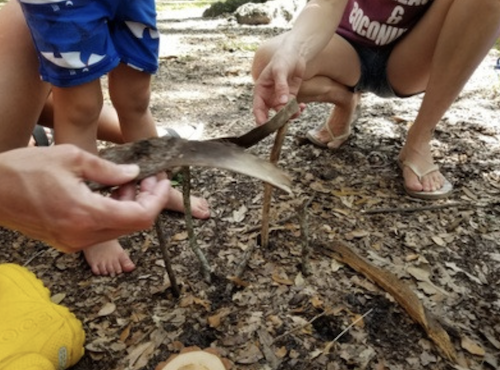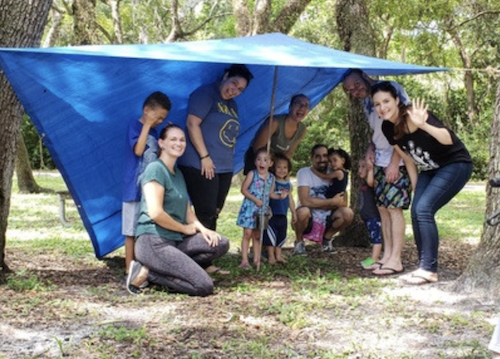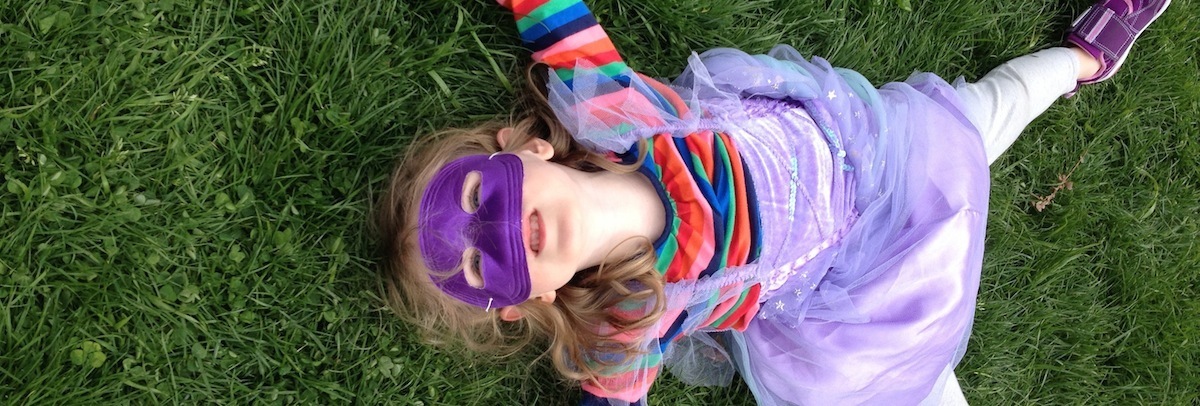Spaces for All Friends
-
Age: 0 to 8+
-
Time: 1 hour+
-
Materials: various household materials
- Skills: Imagination, Problem Solving, Empathy
A sense of belonging is a universal need, and communities in which everyone is included are the strongest for all of us. This Spring, as part of our empathy series, we developed this lesson to help kids consider the unique needs and strengths of friends as they create inclusive spaces for play.
We also share this as part of our June Free Calendar because it is, at its heart, a lesson in including everyone, exactly as they are—something we care deeply about and hope that every explorers can learn to do. What a world we'll have if they do!
We also share this as part of our June Free Calendar because it is, at its heart, a lesson in including everyone, exactly as they are—something we care deeply about and hope that every explorers can learn to do. What a world we'll have if they do!
The Guide
Step 1: Watch the Tinkergarten Anywhere Room For All video lesson.
If you subscribed for Spring/Empathy series, hop into your My Tinkergarten trial dashboard to watch the Room For All video lesson. Kids can watch how Meghan and other explorers create inclusive spaces for play. Then, kids can get inspired to help friends feel included.
Not subscribed? You can still watch this one. We're sharing this special lesson with everyone because, at its heart, it is all about something we care deeply about—supporting ALL learners at Tinkergarten. Click here to watch the 10-minute video lesson.
Not subscribed? You can still watch this one. We're sharing this special lesson with everyone because, at its heart, it is all about something we care deeply about—supporting ALL learners at Tinkergarten. Click here to watch the 10-minute video lesson.
Step 2: Gather your materials and invite play.
- Invite kids to gather some of their stuffed animals. Invite forest friend to join in your adventure, too.
- Gather a few building materials that kids can use in their play (e.g. blankets, bed sheet, tarp).
- Wonder: “How could you create a space big enough for all of your stuffed animals to play together?”
Step 3: Create a play space!
Support kids with gathering materials and building their play space as needed. Some ideas:
- Use an outdoor table or chairs and a blanket or tarp to create an outdoor fort big enough for stuffed animals to play underneath.
- Gather sticks, rocks and other objects to create a border for a play area for stuffed animals to play within.
- Use a tarp and twine to create an outdoor shelter. See how here.
- Use couch cushions, blankets and bed sheets to create an indoor hideaway.
Step 4: Explore the needs of friends and activate empathy.
As kids build, invite them to tell you about the needs of each of their stuffed animal friends. How do they like to play? Do they like small, cozy spaces or big spaces? Do they like to play close to others or do they need more personal space? Wonder together how kids could build the space so that it meets the different needs of each of their friends.
Once constructed, welcome kids to continue playing with their stuffed animal friends in their play space. Kids can invite other friends (real or stuffed animal) to join in, too!
Extend Play!
Build tiny spaces for tiny friends—All creatures need shelter and spaces to live and play. Invite kids to use sticks, leaves, rocks and other found objects to create mini-shelters or play spaces for tiny creatures.
Create a space for family and friends to play—Invite friends and/or family members to work together to create an indoor or outdoor play space big enough for all to fit inside.
Why is this activity great for kids?
Creating a space in which all stuffed animals can play and have their imagined needs met is a playful way to offer kids a foundation in the concept of inclusivity and develop compassionate empathy. As kids use natural and household objects to build their spaces, they will also use their creativity, problem-solving skills and persistence.





